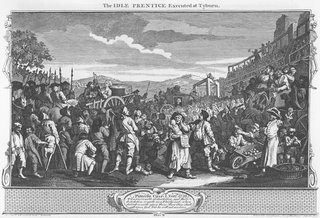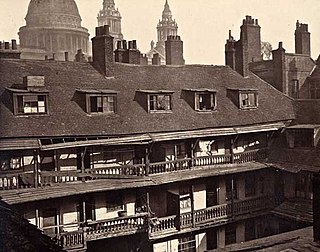 W
Wstill
 W
WThe Auchinleck Manuscript, NLS Adv. MS 19.2.1, currently forms part of the collection of the National Library of Scotland. It is an illuminated manuscript copied on parchment in the 14th century in London. The manuscript provides a glimpse of a time of political tension and social change in England. The English were continuing to reclaim their language and national identity, and to distance themselves from the Norman conquerors who had taken over the country after the Battle of Hastings 300 years before.
 W
WThe Ayahs' Home, London, provided accommodation for Indian ayahs and Chinese amahs (nannies) at the turn of the 20th century who were "ill-treated, dismissed from service or simply abandoned" with no return passage to their home country. The Home also operated like an employment exchange to help ayahs find placements with families returning to India. It was the only institution of its type in Britain with a named building.
 W
WBethnal Green is a London Underground station in Bethnal Green, London, served by the Central line. It lies between Liverpool Street and Mile End stations, is in Travelcard Zone 2, and is open 24 hours on a Friday and Saturday as part of the Night Tube service. The station was opened as part of the long planned Central line eastern extension on 4 December 1946, having previously been used as an air-raid shelter. On 3 March 1943, 173 people, including 62 children, were killed in a crush while attempting to enter the shelter, in what is believed to be the largest loss of civilian life in the UK during the Second World War.
 W
WThe Bloomberg tablets are a collection of 405 preserved wooden tablets that were found at the site of the Bloomberg building in the financial district of London. Excavations of the site took place between 2010 and 2013, after which the current Bloomberg building was constructed on the site of the archaeological dig.
 W
WThe Croydon Natural History & Scientific Society (CNHSS) is a cultural society based in Croydon, south London, that concerns itself with the local history, archaeology, natural history and geology of the London Borough of Croydon and adjoining districts of Greater London, Surrey and Kent. It was founded in 1870; and is a registered charity.
 W
WThe Crystal Sceptre is part of the regalia of the Lord Mayor of London. It was presented to the City of London by King Henry V in return for having provided the king with 10,000 marks (£6,666) to fund a war in France in 1415, when his army captured Harfleur and then won the Battle of Agincourt.
 W
WThe demography of London is analysed by the Office for National Statistics and data is produced for each of the Greater London wards, the City of London and the 32 London boroughs, the Inner London and Outer London statistical sub-regions, each of the Parliamentary constituencies in London, and for all of Greater London as a whole. Additionally, data is produced for the Greater London Urban Area. Statistical information is produced about the size and geographical breakdown of the population, the number of people entering and leaving country and the number of people in each demographic subgroup.
 W
WEpping Forest is a 2,400-hectare (5,900-acre) area of ancient woodland between Epping in Essex to the north, and Forest Gate in Greater London to the south, straddling the border between London and Essex. It is a former royal forest, and is managed by the City of London Corporation. An area of 1,728 hectares is a Site of Special Scientific Interest and a Special Area of Conservation. It gives its name to the Epping Forest local government district, which covers part of it.
 W
WLes Français parlent aux Français was a daily radio broadcast in French transmitted on the BBC. It was broadcast from the 14 July 1940: under the title Ici la France then, from 6 September 1940 to 31 August 1944, under its better known name.
 W
WHanger Hill Wood is a small remnant of ancient woodland to the east of the Hanger Hill Park and North Circular Road at Hanger Lane, in Ealing in the London Borough of Ealing. Named from 'Hangra', the Old English word for wooded slope. There is access from Hanger Lane, alternative access is at several points on Chatsworth Road.
 W
WLady Theodosia Ivie (1628–1697) was an aristocratic heiress and a figure of notoriety in the east end of London in the 17th century. Famed for her “wit, beauty and cunning in law above all others,” her claims to own land stretching from Wapping to Ratcliff led to a constant stream of litigation which ran for almost 75 years. At one particular trial, presided over by Lord Chief Justice Jeffreys, evidence emerged that Ivie had presented the court with forged deeds on which she made her land claims and Jeffreys subsequently arranged for charges to be brought against her for forgery.
 W
WPrince Lee Boo was the second son of Ibedul, the ruler of Koror in the Pelew Islands, now called Palau. Prince Lee Boo was one of the first people from the Pacific Islands to visit Great Britain. When the China trader Antelope, on a voyage to China for the East Indian Company, was wrecked on the island of Oroolong in Western Palau in 1783, its survivors, including Captain Henry Wilson, spent three months on Palau. When the survivors were finally rescued, Captain Wilson agreed to take Lee Boo to London to acquire more knowledge about Europe. He arrived about a decade after the Tahitian Omai, on 14 July 1784, in Portsmouth, aboard the Morse, and was quickly dubbed "The Black Prince" by London society, who were charmed by his poise and intelligence. The Wilson family took him into their home in London, where he attended church ceremonies, dinner parties and European school for several months. However, he died of smallpox on 27 December 1784, some six months after his arrival in London. He was 20 years old.
 W
WThe Letter-Books of the City of London are a series of fifty folio volumes in vellum containing entries of the matters of in which the City of London was interested or concerned, beginning in 1275 and concluding in 1509. The volumes are part of the collection of the City of London Records Office, and are kept in the London Metropolitan Archives.
 W
WLondon is a historical novel by Edward Rutherfurd published in 1997, which charts the history of London from 54 B.C. to 1997. The novel begins with the birth of the River Thames and moves to 54 B.C., detailing the life of Segovax, a curious character with slightly webbed hands and a flash of white hair. Segovax becomes the ancestor of the Ducket and Dogget families, prominent fictional families woven into the novel.
 W
WThe London and Middlesex Archaeological Society (LAMAS) is a society founded in 1855 for the study of the archaeology and local history of the City of London and the historic county of Middlesex. It also takes an interest in districts that were historically in Surrey, Kent, Essex and Hertfordshire, but that now lie within Greater London. The Society receives support from the Museum of London, and works in close association both with the Museum and with Museum of London Archaeology. It acts to some extent as an umbrella organisation to support smaller archaeological and local history societies in the Greater London area. It hosts an Annual Conference of London Archaeologists and an annual Local History Conference.
 W
WThe London Bridge Experience is a tourist attraction in Southwark, London, England, on the south bank of the River Thames. Guests are led by actors on a tour through moments in London's history, including Boudicca's battles with the Romans, and The Great Fire of London.
 W
WAs the national capital, and by far the largest city, London was central to the British war effort. It was the favourite target of the Luftwaffe in 1940, and in 1944-45 the target of the V-1 cruise missile and V-2 rocket attacks.
 W
WThe London Topographical Society was founded as the Topographical Society of London in 1880. A quinquennial journal, the London Topographical Record, has been published since 1880. It is a registered charity, number 271590.
 W
WJames Henry Nixon (1802-1857) was an illustrator and painter during the Victorian period, who worked in the firm Ward and Nixon painting stain glass windows. James Henry Nixon was a protege of Charles Winston, who praised Nixon's work at Westminster Abbey and Church of Christ the King, Bloomsbury. The company Ward and Nixon was followed by Ward and Hughes.
 W
WThe Ordinary of Newgate's Account was a sister publication of the Old Bailey's Proceedings, regularly published from 1676 to 1772 and containing biographies and last dying speeches of the prisoners executed at Tyburn during that period. The Accounts were written by the chaplain of Newgate Prison, recounting the statements made by the condemned during confession. Over 400 editions were published, containing biographies of some 2,500 executed criminals.
 W
WPea soup fog is a very thick and often yellowish, greenish or blackish fog caused by air pollution that contains soot particulates and the poisonous gas sulphur dioxide. This very thick smog occurs in cities and is derived from the smoke given off by the burning of soft coal for home heating and in industrial processes. Smog of this intensity is often lethal to vulnerable people such as the elderly, the very young and those with respiratory problems. The result of these phenomena was commonly known as a London particular or London fog; in a reversal of the idiom, "London particular" became the name for a thick pea and ham soup.
 W
WPrinting House Square was a London court in the City of London, so called from the former office of the King's Printer which occupied the site. For many years, the office of The Times stood on the site, until it relocated to Gray's Inn Road and later to Wapping. The site has been completely redeveloped.
 W
WThe Royal Mint is a government-owned mint that produces coins for the United Kingdom. Operating under the legal name The Royal Mint Limited, the mint is a limited company that is wholly owned by Her Majesty's Treasury and is under an exclusive contract to supply all the nation's coinage. As well as minting circulating coins for use domestically and internationally, the mint also produces planchets, commemorative coins, various types of medals and precious metal bullion. The mint exports to an average of 60 countries a year, making up 70% of its total sales. Formed over 1,100 years ago, the mint was historically part of a series of mints that became centralised to produce coins for the Kingdom of England, all of Great Britain and eventually most of the British Empire. The original London mint from which the Royal Mint is the successor was established in 886 AD and operated within the Tower of London for approximately 800 years before moving to what is now called Royal Mint Court where it remained until the 1960s. As Britain followed the rest of the world in decimalising its currency, the Mint moved from London to a new 38 acres (15 ha) plant in Llantrisant, Glamorgan, Wales, where it has remained since.
 W
WThe Society for Photographing Relics of Old London was founded in 1875 in London, England, initially with the purpose of recording the Oxford Arms, a traditional galleried public house on Warwick Lane that was to be demolished as part of the redevelopment of the Old Bailey.